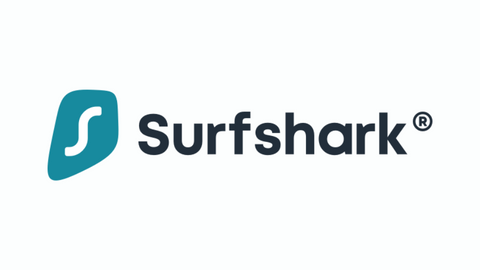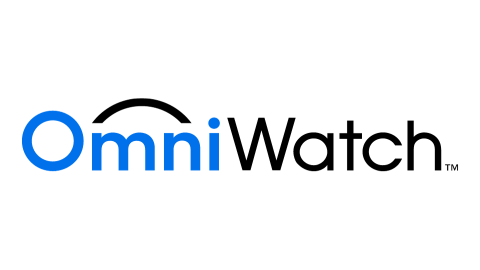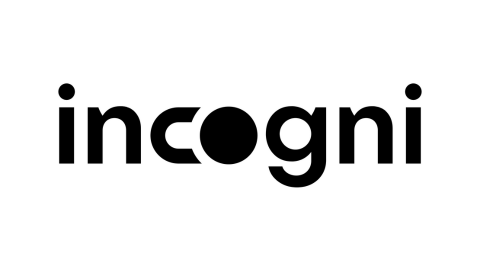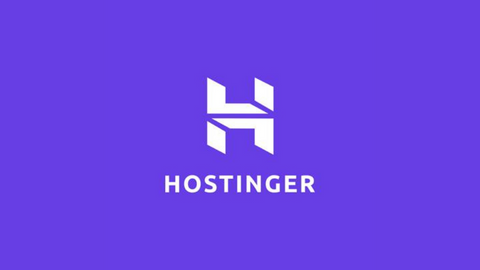Here, we will address FedRAMP’s continuous Monitoring, and I will reveal the strategies for ongoing compliance.
In today’s interconnected digital landscape, the security of sensitive information is paramount. For organizations handling government data in the United States, compliance with the Federal Risk and Authorization Management Program (FedRAMP) is not just a one-time task but an ongoing commitment.
FedRAMP Continuous Monitoring (ConMon) ensures that cloud service providers (CSPs) maintain high security and compliance throughout their service lifecycle.
TOP DEALS
READ ALSO: 16 Best Protection Tools Against Hackers [100% WORKING]
Table of Contents
Understanding FedRAMP Continuous Monitoring
FedRAMP Continuous Monitoring is an integral part of the FedRAMP authorization process. The journey doesn’t end there once a cloud service achieves its initial FedRAMP authorization.
Continuous Monitoring involves assessing and analyzing security controls, risk management, and system performance to ensure compliance with established security standards.
Why Ongoing Compliance Matters
Continuous Monitoring isn’t just a regulatory checkbox; it’s a proactive approach to security.
Maintaining compliance with evolving cybersecurity threats and technological advancements is crucial to safeguarding government data.
It helps organizations promptly identify vulnerabilities or deviations from the established security baseline, allowing for timely remediation and risk mitigation.
1. Adaptation to Evolving Threat Landscape
Cyber threats are dynamic and constantly evolving. Attack vectors and techniques used by malicious actors are continuously changing.
Ongoing compliance ensures that security measures stay up-to-date and adaptable, allowing organizations to address emerging threats proactively.
2. Timely Identification and Mitigation of Risks
Continuous Monitoring enables swift identification of vulnerabilities, deviations, or security incidents.
Timely detection allows for immediate mitigation, reducing the window of opportunity for attackers and minimizing potential damage or data breaches.
3. Maintaining Trust and Credibility
Government agencies and other entities entrust sensitive data to organizations that are compliant with FedRAMP standards.
Continuous compliance demonstrates an unwavering commitment to safeguarding this data, thereby maintaining stakeholder trust and credibility.
4. Cost-Efficiency and Risk Reduction
Addressing security issues early through ongoing compliance minimizes the potential financial impact of breaches or non-compliance penalties.
Investing in continuous Monitoring and compliance is more cost-effective than dealing with the aftermath of a security incident.
5. Regulatory and Legal Obligations
Regulatory frameworks like FedRAMP binds organizations dealing with government data.
Ongoing compliance ensures adherence to these regulations, mitigating the risk of regulatory fines, legal actions, or business disruptions due to non-compliance.
6. Continuous Improvement and Optimization
Continuous Monitoring fosters a culture of constant improvement. By regularly evaluating security controls and procedures, organizations can identify areas for enhancement, optimizing their security posture over time.
7. Proactive Risk Management
Instead of reacting to security incidents, ongoing compliance allows for proactive risk management.
Regular assessments and Monitoring enable organizations to anticipate potential threats and take preventive measures before they escalate.
8. Sustaining Competitive Advantage
Maintaining a robust security posture through ongoing compliance can be a differentiator in the marketplace.
It demonstrates a commitment to security, potentially attracting customers who prioritize data protection and compliance.
9. Business Continuity and Resilience
By staying compliant and proactively addressing security risks, organizations ensure business continuity.
They reduce the likelihood of disruptions caused by security incidents, safeguarding operations and service continuity.
READ ALSO: How MDR Strengthens Compliance and Reduces Breach Costs
Strategies for Effective FedRAMP Continuous Monitoring
- Automated Monitoring Tools: Implementing robust monitoring tools can streamline the collection and analysis of security data. These tools enable real-time Monitoring, promptly alerting teams to potential security incidents.
- Regular Security Assessments: Security assessments and audits ensure that systems and processes meet security requirements. Periodic assessments help identify weaknesses, ensuring that potential risks are addressed promptly.
- Continuous Risk Assessment and Response: Maintaining an up-to-date risk register allows organizations to assess and prioritize potential risks based on their impact. This approach helps deploy resources effectively to mitigate the most critical risks first.
- Training and Awareness Programs: Educating employees about security best practices and compliance is crucial. Regular training sessions and awareness programs create a security-conscious culture within the organization, reducing the likelihood of human error leading to security breaches.
- Incident Response Planning: Develop a robust incident response plan outlining steps to be taken in case of a security breach. This plan should include clear procedures for containment, investigation, resolution, and communication with stakeholders.
READ ALSO: Car Care and Cybersecurity: Protecting Your Vehicle Inside and Out
The Benefits of EffeMonitoringinuous Monitoring
The benefits of implementing effective continuous Monitoring, particularly in the context of FedRAMP compliance, are multifaceted and play a pivotal role in ensuring robust security standards.
Here’s a deep monitoring of the advantages:
1. Early Threat Detection and Response
Continuous Monitoring enables real-time or near-real-time visibility into systems and data security posture.
Early detection of potential threats or anomalies allows for immediate response and mitigation measures, reducing the impact of security incidents.
2. Improved Incident Response Time
With continuous monitoring tools and processes, organizations can significantly reduce the time to detect, analyze, and respond to security incidents.
This swift response minimizes the potenMonitoringe caused by security breaches.
3. Enhanced Security Posture
Regular Monitoring and assessment of security controls contribute to an overall fortified security posture.
Organizations can promptly address vulnerabilities and strengthen their defenses against potential cyber threats by identifying weaknesses or gaps in controls.
4. Cost Savings and Risk Mitigation
Identifying and resolving security issues early on reduces the potential financial impact of breaches.
Organizations save on remediation costs and potential regulatory finMonitoringputational damage by avoiding or mitigating the consequences of security incidents.
5. Compliance Adherence and Assurance
Continuous Monitoring ensures ongoing compliance with FedRAMP standards.
By consistently meeting regulatory requirements, organizations reassure stakeholders, including government agencies and customers, about their security and compliance commitment.
6. Efficient Resource Allocation
Continuous Monitoring helps prioritize security efforts and resource allocation based on identified risks.
This targeted approach allows organizations to allocate resources where they are most needed, optimizing their security investments.
7. Business Continuity and Operational Resilience
Maintaining continuous monitoring practices contributes to business continuity.
By proactively managing security risks, organizations reduce the likelihood of disruptions, ensuring uninterruptMonitoringons and services.
8. Data Protection and Confidentiality
Continuous Monitoring plays a crucial role in safeguarding sensitive data.
It helps maintain information confidentiality, integrity, and availability, thereby protecting critical data assets from unauthorMonitorings or breaches.
9. Facilitation of Continuous Improvement
Continuous Monitoring is not only about identifying issues but also about learning from them.
It facilitates a culture of continuous improvement by analyzing incidents and weaknesses, enabling organizations to implement better security practices and enhance their overall security posture.
10. Stakeholder Confidence and Monitoring
Consistent adherence to FedRAMP standards through effective continuous Monitoring builds trust among stakeholders, including government agencies, partners, and customers.
Demonstrating a commitment to ongoing security reassures stakeholders about the organization’s reliability and dedication to data protection.
FedRAMP Continuous Monitoring: Frequently Asked Questions
What are the critical aspects of FedRAMP Continuous Monitoring?
- Ongoing Security Posture Assessment: CSPs must continuously monitor their security posture to ensure it aligns with FedRAMP security controls. This involves regular vulnerability scanning, penetration testing, and security log analysis.
- Proactive Threat Detection: Continuous Monitoring aims to detect potential security threats and vulnerabilities before they can be exploited. This includes Monitoring for malicious activity, suspicious login attempts, and system anomalies.
- Focus on Change Management: Any changes to the cloud service offering, such as system updates, new features, or infrastructure modifications, must be assessed for potential security implications.
- Reporting Requirements: CSPs must report their continuous monitoring activities to the Federal Risk and Authorization Management Program (FedRAMP) and their agency sponsors. This includes reports on identified vulnerabilities, remediation actions, and any security incidents encountered.
How does continuous Monitoring benefit Cloud Service Providers and Federal Agencies?
- Reduced Risk: By proactively identifying and addressing security vulnerabilities, CSPs can significantly reduce the risk of data breaches and system outages. This fosters a more secure environment for handling sensitive government data.
- Improved Transparency: Continuous monitoring reports provide transparency to federal agencies regarding the ongoing security posture of the cloud service offering. This builds trust and confidence in the security controls implemented by the CSP.
- Faster Response Times: Continuous Monitoring allows for early detection and response to security incidents. This minimizes potential damage and facilitates more rapid recovery times in a cyberattack.
- Enhanced Compliance: Regular Monitoring helps ensure ongoing compliance with FedRAMP security controls, which is vital for maintaining authorization to serve the federal government.
Conclusion
FedRAMP Continuous Monitoring is not just a regulatory obligation; it’s a proactive approach to maintaining robust cybersecurity standards.
By implementing effective strategies, organizations can ensure ongoing compliance, mitigate risks, and stay ahead of potential security threats.
Embracing continuous Monitoring as a part of the organizational culture strengthens security resilience, fosters trust among stakeholders, and ensures the protection of sensitive government data.
INTERESTING POSTS
- Addressing The Cybersecurity Risks Presented By Remote Learning
- What to Do If Your Business’s Software Solutions Aren’t Bringing Results
- 5 Cybersecurity Tips To Protect Your Digital Assets As A Business
- Zero Trust Architecture: Enhancing Network Security
- 5 Business-Process Improvement Ideas
- VMware Backup and Recovery: Importance of Backup Strategy and How to implement them
- Best Residential Proxies In 2024: A Comprehensive Guide
- HideMy.name VPN Review 2024: Is It Worth It?
- ZoogVPN Review 2024: The Best Budget VPN for Beginners
- Surfshark Search Review 2024
About the Author:
Meet Angela Daniel, an esteemed cybersecurity expert and the Associate Editor at SecureBlitz. With a profound understanding of the digital security landscape, Angela is dedicated to sharing her wealth of knowledge with readers. Her insightful articles delve into the intricacies of cybersecurity, offering a beacon of understanding in the ever-evolving realm of online safety.
Angela's expertise is grounded in a passion for staying at the forefront of emerging threats and protective measures. Her commitment to empowering individuals and organizations with the tools and insights to safeguard their digital presence is unwavering.















